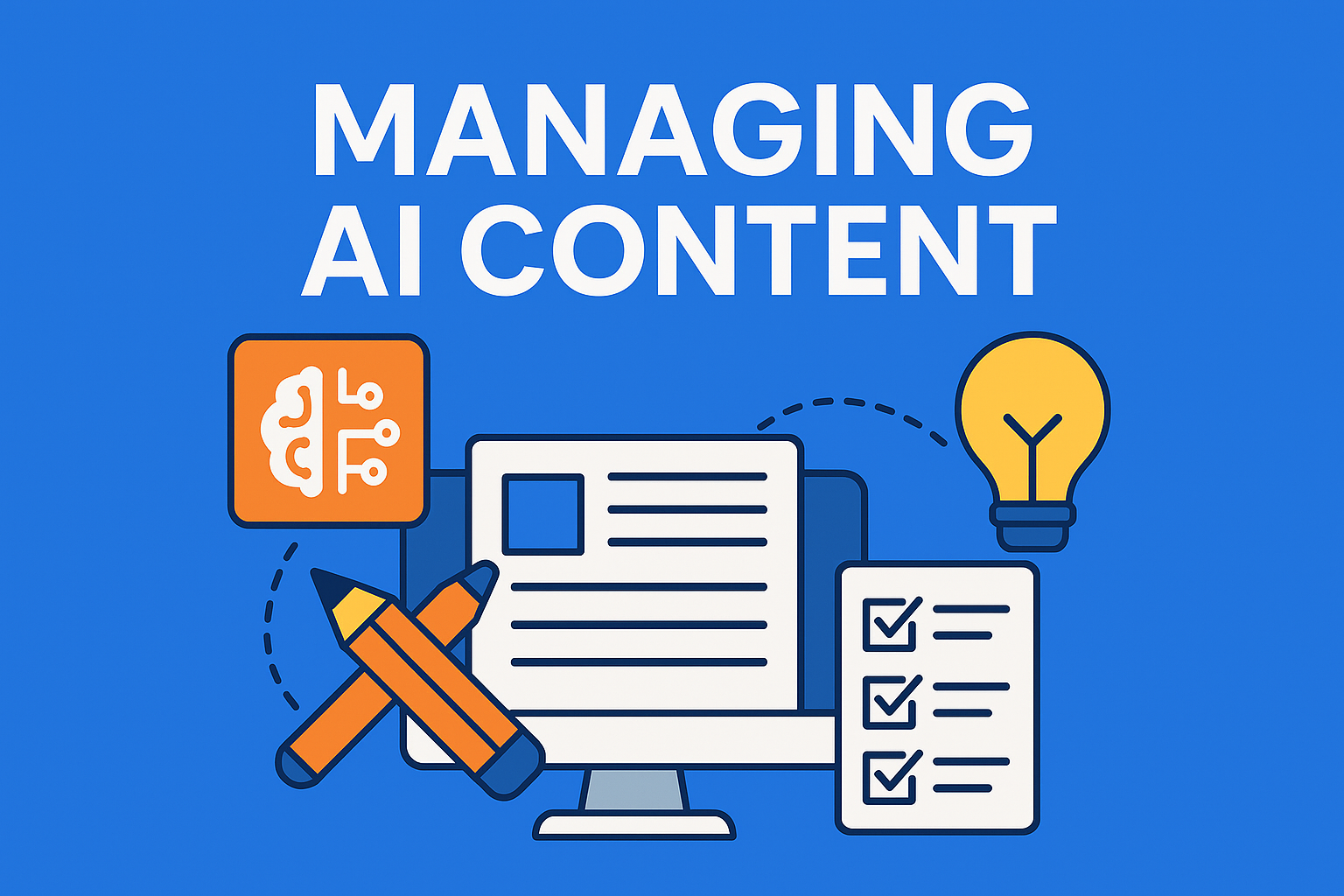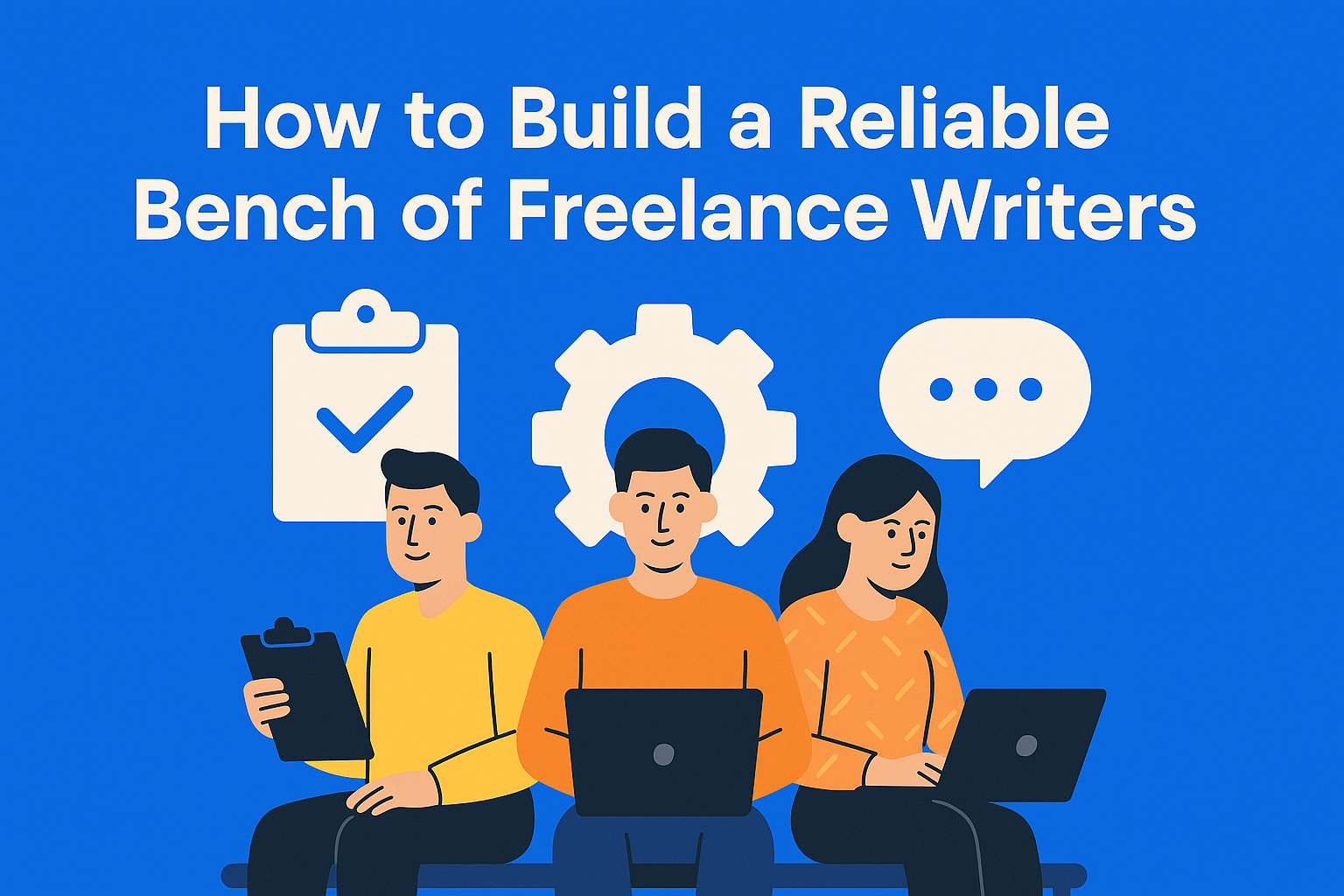Managing AI Content from Draft to Publish
AI can help you create content quickly, but without human review, there’s no quality. With a good process and tools like EasyContent, your team can manage AI content more easily and publish accurate, consistent, and valuable content. AI + people = better content.

AI tools have totally changed how fast we can create content. You can go from idea to full draft in a few minutes, but, just because AI can write fast doesn’t mean it’s ready to publish. Managing AI-generated content still takes a bit of work to make sure it’s accurate, on-brand, and truly valuable for your readers.
This post will take you through a simple, step-by-step process on how to handle AI content the right way, from generating that first draft to pressing “publish.” With the right approach (and a little human touch), AI can help you work smarter, not harder. Let’s dive in and see how to make AI content work for you, not against you.
Key Takeaways
- AI speeds up content creation but still needs human review for quality and accuracy.
- Start with clear prompts to generate better aligned content from AI.
- Human edits refine AI drafts ensuring brand voice and factual correctness.
- Clear approval workflows prevent delays and keep content flowing smoothly.
- SEO & formatting matter - optimize AI content for search and readability.
- Distribution & tracking help maximize the value of each AI-generated piece.
Step 1: Start with the right prompt
Good AI-generated content starts with a good prompt, it’s simple. Think of it this way: the more detailed the prompts, the better. AI is not magic, it needs clear direction to create content that truly fits your needs.
If you ask AI something like, “Write a blog about marketing,” you will get some generic answer that will have no value.
But if instead you try something like this:
“Write a 500-word blog about how small businesses can use email marketing to increase customer loyalty. Keep the tone friendly and include three actionable tips.”
Then you will surely get a much better answer.
When you include details such as topic, audience, tone, even structure, AI can create content that is much more aligned with what your team needs.
Pro Tip: Before you press "generate" - define precisely:
- What is the topic?
- Who is it for?
- What tone or style should it have?
- Any key points or examples to include?
Detailed prompts save time and make everything smoother, especially when creating content at scale.
Step 2: Human review and the final touch
AI-generated content can give you a good foundation to start, but let’s be real, it’s not ready for publishing right away. That’s where your team has work to do. AI is a helpful assistant, not a replacement. It can handle structure and information on the surface, but you bring the nuance and brand voice that makes the content truly work.
Here’s how content teams can take AI drafts to the next level:
Start with brand voice and tone:
AI can write “friendly” or “professional” if you ask it, but it doesn’t know your brand. Make sure the content sounds like you, not like it could have come from any company.
Check all facts:
AI sometimes makes mistakes so always double-check statistics, names, dates, and any details before you publish the content.
Add personal touches and insights:
This is where your content stands out. AI can’t replicate unique experiences, stories, or perspectives of your team. Adding those human elements builds trust and makes your content real.
Let AI handle structure, you handle style:
AI is good with layouts, headings, bullet points and summaries. But the language? It should feel natural and human, like it’s written for your audience, not by a robot.
Step 3: Smooth Out Your Approval Workflow
After your AI-generated content has been reviewed and polished, it’s time for the final green light. But without a clear approval process, things can quickly get stuck, especially when feedback is scattered or too many people are involved.
Start by defining who approves what
Who really needs to give the final approval? Is it the content manager? Marketing lead? Maybe just a senior editor? Keep the list as small as possible. The more people involved, the more delays you will have.
Set clear guidelines for feedback
Let reviewers know:
- When they need to leave feedback
- How much time they have to respond
- What kind of feedback is useful (big picture vs. small details)
Centralize the process
Skip the email chains and random Slack messages. Use one platform for:
- Assigning roles
- Collecting and managing feedback
- Tracking approvals in real time
This keeps everything organized, so nothing gets lost and everyone knows exactly where things stand.
Why this is important for content teams
A simplified approval process is not just about saving time, but about keeping your team aligned. When roles are clear, feedback focused, and the workflow simple, content moves faster from draft to final publish and with less stress.
Step 4: Formatting and SEO optimization.
Even if AI makes you a strong draft, you still have to fine-tune it for search engines and for your readers. Although AI tools can do a lot of the work, it’s up to you to make sure everything is polished and optimized for search engines.
First, improve keyword placement. AI can include natural keywords, but are they really natural? Make sure keywords flow naturally from your headings, subheadings, and main ideas without it being just a bunch of keywords thrown into the text.
Then pay special attention to meta elements, that is, titles, meta descriptions, and URL slugs. Titles should catch people’s attention, descriptions should be short and clearly show what the text is about, and URL slugs also shouldn’t be too long.
Remember flow and readability too. Use bullet points, break up long paragraphs, and make sure your material looks good on the screen.
Although useful for SEO checks, avoid relying too much on tools like Yoast, Clearscope, or Grammarly. Write first for real people, it’s important that the text has value, if you believe in yourself and know what you are writing about, chances are small that you’ll make a mistake.
In the end, artificial intelligence can get you started; but, the human touch is what separates good material from outstanding one that ranks and connects.
Step 5: Distribution and Publishing
Your AI content is ready for publishing when it is fully polished.
First, plan your material using your CMS e.g. WordPress or social media tools e.g. Buffer or Hootsuite. This guarantees that your posts are published at the best time for your audience and helps everything stay organized.
When you publish content don’t forget about it. Use your AI materials to get the max out of their value. From a blog post you can make a newsletter fragment, a series of social media posts, or even a short video script. Although you choose how it will be shared, AI can help you improve the format.
In the end, track how your content performs. See what works and what doesn’t, using built-in social insights or Google Analytics. Whether it is produced by artificial intelligence or not, this helps you shape your next content.
Publishing is only the beginning. Good distribution and tracking keep the content cycle going and give you directions for your decisions about your next post.
How EasyContent supports content teams in managing AI-generated content
Without the proper system, AI-generated content can quickly become disorganized chaos. But, it can also be a big time saver. EasyContent can help you with this.
From drafts generated by artificial intelligence to human edits, reviews, and final approvals, it provides your team with one central place to handle your whole process.
Features that EasyContent has:
...and many others. All of these allow your team to easily combine the efficiency of AI with human creativity.
Do everything in one place:
- Assign tasks
- Create deadlines
- Give comments
- Track progress
EasyContent helps your team be faster, more organized, and fully aligned by relieving the pressure of managing AI-supported content creation.
AI + Your Team = Better, Faster Content
AI can help get things moving, but your content team is the one that brings ideas to life. AI is great for drafts and structure, but it can’t (on its own) capture your brand’s voice, creativity, or insights. You'll always need a human touch for that.
To make AI content truly work, you need a clear, organized system to manage the whole process, from first draft to final approval. Tools like EasyContent help teams stay aligned, simplify reviews, and ensure that every piece hits the mark.






